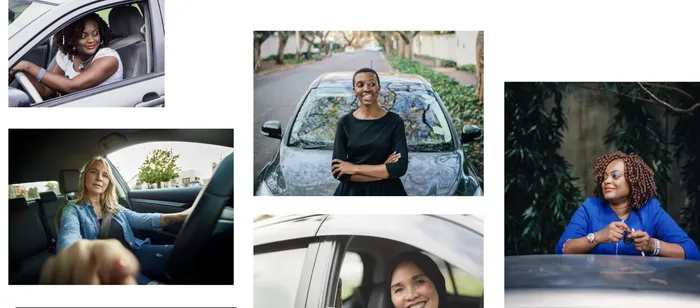
.
Image: Uber
In a move that blends product engineering with social responsibility, Uber is rolling out more granular gender-preference matching across global markets, from South Africa to its newly announced U.S. pilot, allowing women riders to request women drivers and women drivers to opt into women-only ride requests.
On Tuesday, Uber announced that it is formally launching a “women-only rides” option via its “Women Rider Preference” feature in SA.
The option allows female drivers to elect to accept ride requests only from women passengers, effectively creating women-only matching pairs.
Uber’s own South Africa site contextualises this as part of a broader safety toolkit: the app page notes that the Women Rider Preference allows women or nonbinary drivers to receive only ride requests from women riders.
Previously in South Africa, Uber had introduced a “women-only” driver preference in 2021, letting female drivers opt to match only with female riders.
One particularly technical detail, Uber said that when a female driver sets the preference, if no women rider is available, the system may allow the driver to cancel without penalty (i.e. without negatively affecting her cancellation rate).
That “soft fallback” is important for preserving driver earnings and avoiding too many idle hours.
Because women make up a very small share of Uber drivers in South Africa, as little as 3.8% according to a report by WOW WOMAN, the limited supply puts natural limits on how widely women-only matching can be scaled.
Thus, the system must balance rider preferences, driver availability, and wait times in real time.
Uber’s engineering teams have deployed “Women Rider Preference” as a toggle feature in its driver-partner app.
In essence:
Female (or nonbinary) drivers can turn on a preference to only receive requests from women riders.
When active, the matching engine filters incoming requests such that only women riders are considered.
If no women riders are available within acceptable proximity or time thresholds, fallback behaviour can trigger, e.g, allowing cancellation without penalty, or relaxing the filter after a timeout.
From a backend perspective, this feature is an overlay on Uber’s existing matching, routing, and dispatch systems rather than a wholly separate service.
The algorithm must continuously balance gender-preference constraints with response times, driver utilisation, and fairness to other riders.
Uber has described the feature as a collaboration between product and engineering teams to “empower” women drivers to feel safer, especially during evening hours.
In July 2025, Uber revealed plans to pilot its gender-preference feature in Los Angeles, San Francisco, and Detroit.
Under the “Women's Preferences” brand:
Women riders will get a Women Drivers option at booking.
They can pre-book a female driver (via the Reserve function) or toggle a default preference.
Women drivers can toggle the “Women Rider Preference” to accept only women passengers when they go online.
The system is not guaranteed to match; it's a preference layer, so riders and drivers may still be matched with opposite genders if no preferred match is available.
The pilot will test feasibility, rider and driver adoption, match rates, dispatch performance, wait-time tradeoffs, and whether it meaningfully improves perceived safety.
Uber framed it as granting more choice to female users in the US after listening to feedback globally.
